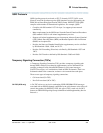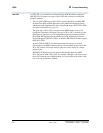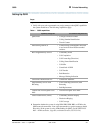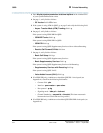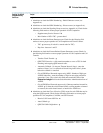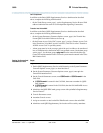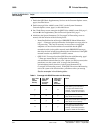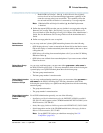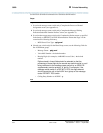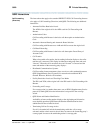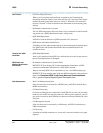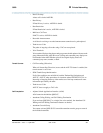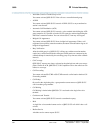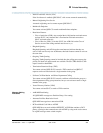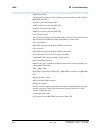
QSIG
377
Administration for Network Connectivity
555-233-504 — Issue 1 — April 2000 CID: 77730
B Private Networking
• Maintain SBA at Principal - Enter y to allow the user who originally
receives the call to have simulated bridged appearance capability in the
event the coverage point(s) are unavailable. This capability allows the
user to break into the call before it is answered by a coverage endpoint.
Note: If Maintain SBA at Principal is enabled (y), then Path Replacement
is disabled.
5 Define the remote QSIG users that you may include in coverage paths using the
Remote Call Coverage Table. See Defining Coverage for Calls Redirected to
External Numbers in the Handling Incoming Calls chapter of the Administrator’s
Guide. See also the Remote Call Coverage Table screen in the Administrator’s
Guide.
6 Define coverage paths for users as required.
Related Phone
Administration
As you set up each user’s phone, QSIG networking features allow the following.
• QSIG displays the user’s name as entered in the Name field on the Station screen,
both on the display of another networked phone when called by that user or when
calling that user.
• QSIG allows call waiting from networked phone calls if you set the Call Waiting
Indication field to y.
• QSIG allows auto callback from networked phones if you create an auto callback
button for the user.
Related Hunt Group
Administration
As you set up each hunt group, you must enter either grp-name or mbr-name in
the ISDN Caller Disp field, page 1. This entry determines which of the following the
system displays on a QSIG networked phone that calls the hunt group:
• The hunt group name/extension
• The hunt group member’s name/extension
Related Administration
of Terminating
Extension Groups
As you set up each terminating extension group, you must enter either grp-name or
mbr-name in the ISDN Caller Disp field. This entry determines which of the
following the system displays on a QSIG networked phone that calls the terminating
extension group:
• The group name/extension
• The group member’s name/extension
Related Administration
of AUDIX/Message
Centers
For AUDIX administration generally, see one of the following:
• Installation and Switch Administration for the DEFINITY AUDIX System R4.0,
585-300-122, which appears on the CD-ROM entitled DEFINITY AUDIX System
R4.0 Documents, 585-300-803.
• Intuity Messaging Solutions LAN Integration with DEFINITY ECS, 585-313-602.
• Switch integration section of the CD-ROM entitled Intuity Messaging Solutions
Release 5 Documentation, 585-313-803
Note: Set up QSIG TSCs before you administer messaging. See Call
Completion (page 363).



